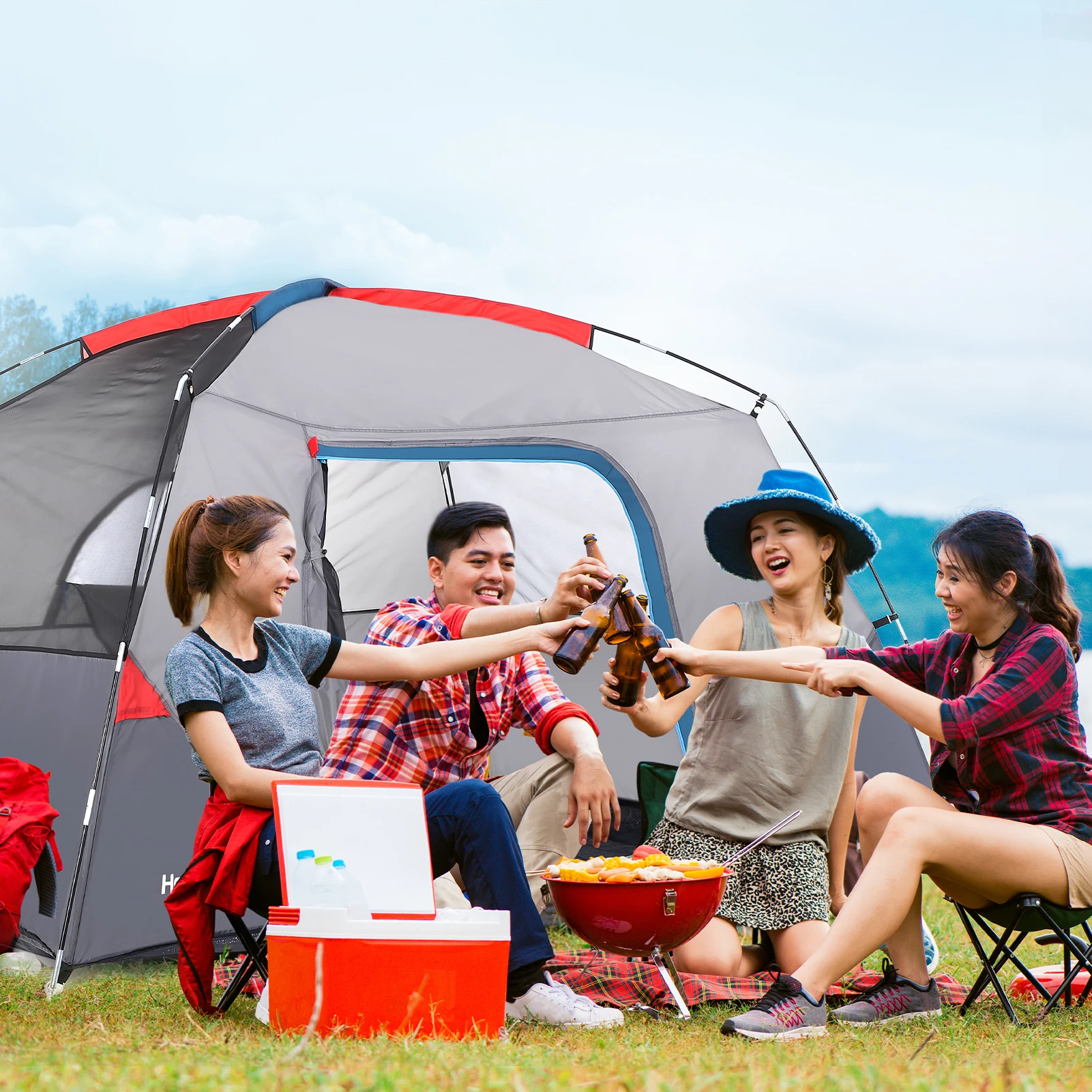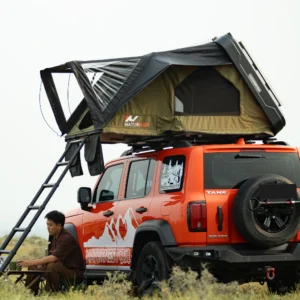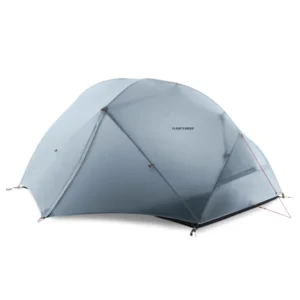Understanding Winter Tent Requirements
Winter camping presents unique challenges that demand specialized gear. Unlike summer or fall outings, winter expeditions expose you to powerful forces of nature: bone-chilling winds that can exceed 40 mph (64 kph), heavy snow loads that can flatten inadequate shelters, and freezing temperatures that test both equipment and human endurance.
Standard 3-season tents simply cannot handle these extreme conditions. Their lighter poles bend or snap under snow weight, their thinner fabrics tear in high winds, and their ventilation systems aren’t designed for winter moisture management. This is why serious winter campers understand the necessity of proper 4-season tents.
True winter tents differ from regular shelters in several critical ways:
- Reinforced structural design to withstand wind and snow pressure
- Specialized fabrics with higher denier ratings for durability
- More extensive guy-out points for superior anchoring
- Weather-specific features like snow skirts and protected ventilation
Whether you’re planning an alpine expedition, a snow camping adventure, or winter backpacking, compact shelter fundamentals become even more critical when the temperature drops. Understanding the requirements for snow camping tents will help ensure your winter adventures remain safe and enjoyable rather than dangerous and miserable.
Essential Features of Windproof Winter Tents
Design Architecture for Wind Resistance
The structural design of a winter tent forms the foundation of its ability to withstand fierce winds. Different architectures offer varying levels of stability and wind performance:
Geodesic/semi-geodesic domes: These designs feature multiple pole intersections (typically 5+ crossing points), creating triangulated structures that excel in distributing wind force evenly. This prevents pole failure and tent collapse, making them ideal for exposed alpine environments.
Tunnel designs: With their aerodynamic profiles, tunnel tents channel wind over and around the shelter. They require precise orientation relative to wind direction but can be remarkably stable when properly set up.
Pyramid/teepee designs: These feature a central support with sloping sides that shed wind efficiently. While simple, this ancient design remains effective, particularly when combined with modern materials.
The best winter camping tents integrate these architectural principles with a low-profile, aerodynamic shape that gives wind minimal surface to push against. Remember that height is your enemy in windy conditions—the closer your tent sits to the ground, the less leverage wind has against it.
Pole Systems and Materials
The pole system functions as the skeleton of your winter shelter, determining whether it stands strong or collapses when the gales arrive. Winter-worthy tents use superior materials and construction methods:
Premium aluminum alloys: DAC Featherlite, DAC Pressfit, and Easton Syclone poles represent the gold standard, offering an optimal balance of strength, weight, and durability.
Diameter and wall thickness: Winter tent poles typically feature 9-11mm (0.35-0.43in) diameters with thicker walls compared to 3-season counterparts.
Connection systems: Sleeve-based pole systems generally provide more stability than clip attachments, though they’re more challenging to set up in cold conditions.
Pole quantity and architecture: More poles mean more strength but also more weight. High-end winter tents often use complex pole arrangements that create multiple support points.
The ideal pole system strikes a balance between flexibility and rigidity. Too rigid, and poles may snap under pressure; too flexible, and the tent deforms excessively in wind.
Fabrics and Weatherproofing
Winter tent materials must withstand not just wind but also abrasion from ice, pressure from snow loads, and the weight of frozen condensation.
Most quality winter tents use nylon or polyester variants with ripstop weaving that prevents tears from spreading. Fabric strength is measured in denier—winter fly materials typically range from 50-70D, while floors often reach 70-150D for ground protection.
Waterproofing is equally critical, with hydrostatic head ratings (a measure of water resistance) starting at 3000mm for rainflies and 5000mm+ for floors. Most manufacturers use polyurethane (PU) coatings, silicone treatments, or combinations of both.
For extreme conditions, specialized materials like those used in ultralight windproof mountaineering equipment offer remarkable strength-to-weight ratios, though they come at a premium price point. These advanced fabrics can make the difference between comfort and catastrophe when winter storms intensify.
Anchoring Systems for Winter Conditions
Even the most advanced tent design fails without proper anchoring. Winter conditions demand specialized approaches to secure your shelter:
Enhanced guy line systems: Winter tents typically feature 6-8 guy-out points (minimum) for a 2-person tent, with reinforced attachment points and reflective cord for visibility in dark conditions.
Specialized stakes: Standard tent pegs are nearly useless in snow. Instead, winter campers rely on:
- Snow stakes (wide, flat designs that maximize surface area)
- Deadman anchors (buried objects like stuff sacks filled with snow)
Ice anchors for frozen ground
Snow-specific anchoring techniques: In deep snow, the deadman anchor technique provides superior holding power. By attaching guy lines to objects (stakes, stuff sacks, even spare gear) and burying them 12-24 inches (30-60cm) deep in compressed snow, you create anchors that harden over time.
Reinforcement points: Quality winter tents feature heavily reinforced stake loops and guy-out points, often with multiple layers of webbing or cordura to prevent tears under tension.
Mastering winter snow tent setup requires practice before you need these skills in critical situations. The security of your shelter—and potentially your safety—depends on proper anchoring techniques when winter winds begin to howl.
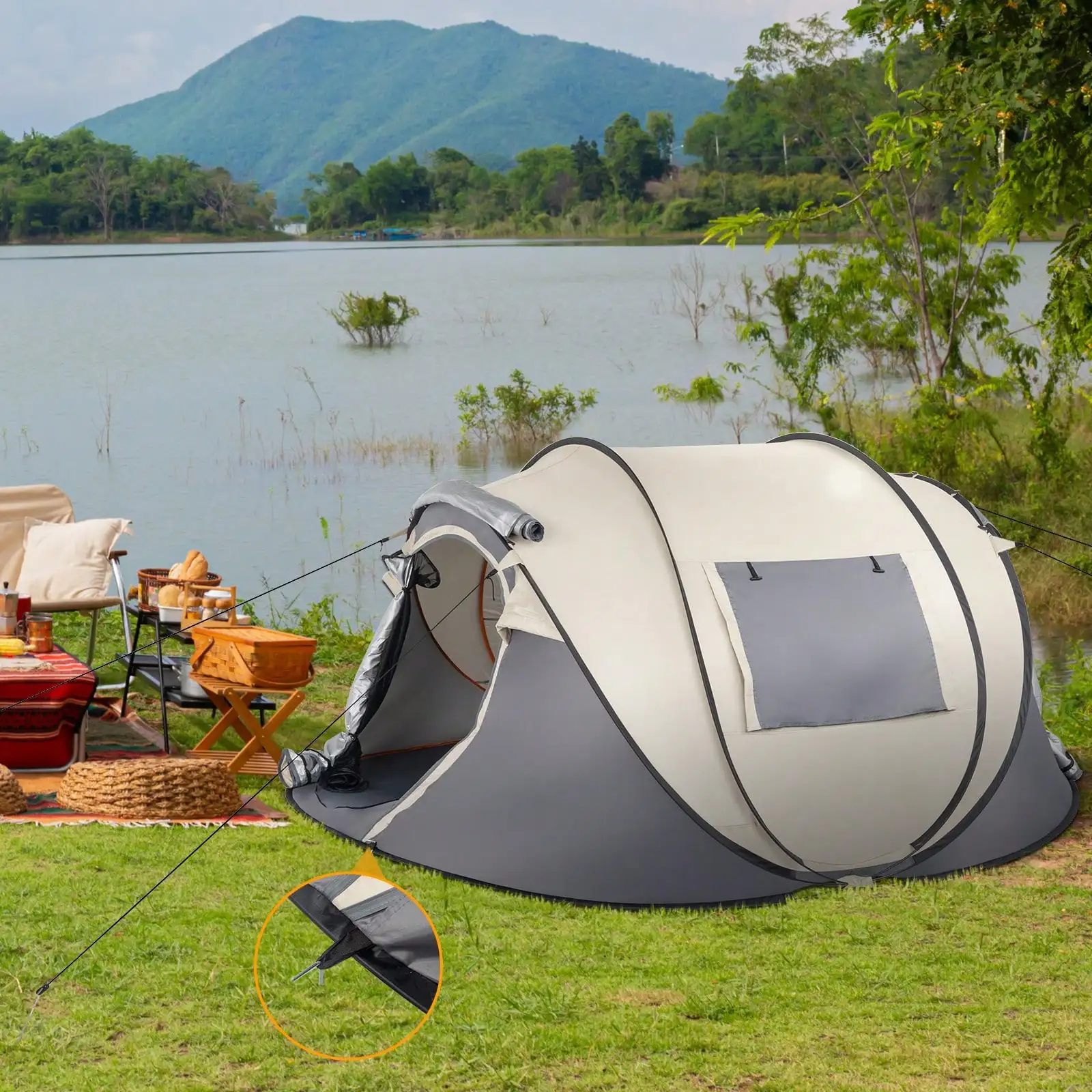
Ventilation and Condensation Management
Perhaps counterintuitively, ventilation becomes even more critical in winter camping than in warmer conditions. Each person produces approximately 1-2 pints (0.5-1L) of moisture overnight through breathing alone, not counting wet gear or cooking.
This moisture challenge requires thoughtful design and management:
Condensation Problems:
* Moisture freezes on tent walls, creating “indoor snow”
* Wet gear becomes dangerously cold gear
* Sleeping bags lose insulation effectiveness when damp
* Mildew develops during storage if not dried properly
Ventilation Solutions:
* High/low vent placement creates natural airflow through convection
* Adjustable panels allow fine-tuning based on conditions
* Mesh panels with weatherproof covers balance airflow and protection
* Strategic orientation relative to prevailing winds
The single-wall versus double-wall construction debate is particularly relevant for winter camping. Double-wall tents offer superior condensation management by creating a buffer zone between inner and outer layers, though they’re typically heavier. Single-wall designs save weight but require more active condensation management.
For extended winter expeditions, the 4-season winter 2-person tents with advanced ventilation systems prove their worth many times over, especially when multiple days of harsh weather prevent proper drying of gear.
Snow-Specific Features for Winter Protection
True winter tents incorporate specialized features designed specifically for snow conditions:
Snow Skirts/Valances: These fabric extensions at the tent’s base can be buried in snow, creating a seal that prevents wind from blowing underneath while also increasing stability by 30-40%. They effectively anchor the tent perimeter and block drafts.
Snow-Loading Capacity: Winter tent designs incorporate steeper walls and reinforced pole structures to shed snow rather than collect it. Cathedral-like ceiling designs prevent snow pooling that can lead to collapse.
Winter Vestibules: Larger than their 3-season counterparts, winter vestibules provide crucial space for gear storage, boot removal, and even protected cooking areas (with proper ventilation to prevent carbon monoxide buildup).
Visibility Features: Bright colors (especially yellow, orange, or red) make tents easier to locate in whiteout conditions or heavy snowfall. Many winter shelters also incorporate reflective elements for location with headlamps.
When selecting compact shelters for two campers, these snow-specific features become essential considerations rather than luxuries for genuine winter conditions.
Top Windproof Tents for Winter Expeditions
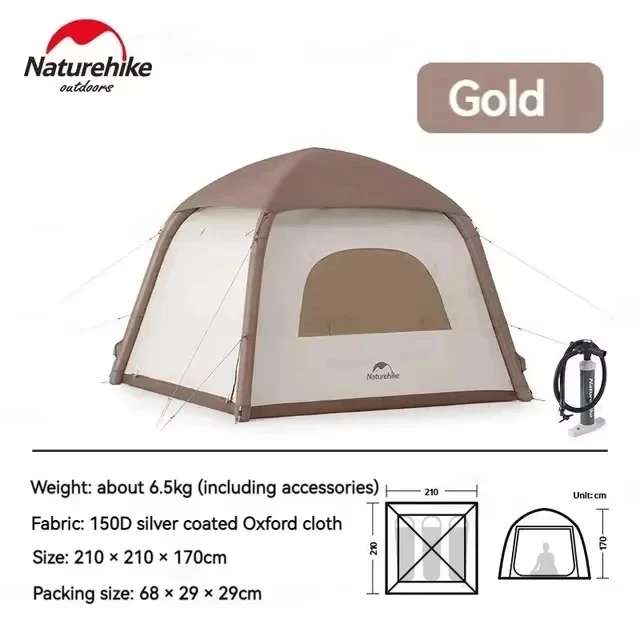
| Model Type | Design | Capacity | Weight | Pole Material | Key Winter Features | Price Range |
|---|---|---|---|---|---|---|
| Premium Expedition | Geodesic | 2-3 person | 8-10 lbs (3.6-4.5kg) | DAC Featherlite NSL | Extended snow skirts, 6+ pole crossings, 70D fabrics | $$$$ |
| Alpine Technical | Semi-geodesic | 2 person | 6-7 lbs (2.7-3.2kg) | DAC Pressfit | Low profile, multiple guy points, vestibule | $$$ |
| Value Winter | Modified dome | 2-3 person | 7-8 lbs (3.2-3.6kg) | Aluminum alloy | Reinforced pole sleeves, snow skirts, 50D fabric | $$ |
| Basecamp/Group | Extended dome | 4+ person | 12-15 lbs (5.4-6.8kg) | Composite aluminum | Multiple rooms, large vestibule, snow valances | $$$$ |
| Alpine Minimalist | Pyramid | 2 person | 4-5 lbs (1.8-2.3kg) | Central carbon pole | Simple setup, excellent wind shedding, minimal profile | $$ |
Premium Expedition Models excel in sustained high-altitude environments where storms can last for days. Their bombproof construction prioritizes reliability over weight considerations, making them ideal for serious mountaineering expeditions above the tree line.
Alpine Technical Tents balance weight and weather protection for climbers and backcountry skiers who need to carry their shelter considerable distances before setting up. They compromise slightly on space for better portability.
Value Winter Options provide adequate protection for occasional winter campers venturing into moderate winter conditions. While not suitable for extreme expeditions, they handle most recreational winter camping situations capably.
Basecamp/Group Shelters serve as comfortable headquarters for longer expeditions or family winter camping trips. Their larger footprint requires more careful site selection but rewards with significantly more living space.
For the most demanding environments, heavy-duty 4-season tents provide the ultimate protection from extreme elements, though they come with corresponding weight penalties.
Heavy Duty 4 Season Tent, Mountaineering Tent, Winter Camping Tent
$870.40 Select options This product has multiple variants. The options may be chosen on the product pageUltralight Backpacking Tent, Ultralight Dome Tent, Winter Camping Tent
Price range: $369.63 through $370.07 Select options This product has multiple variants. The options may be chosen on the product pageHeavy Duty 4 Season Tent, Ultralight Freestanding Tent, Winter Camping Tent
$3,722.66 Select options This product has multiple variants. The options may be chosen on the product pageHeavy Duty 4 Season Tent, Winter Camping Tent
$638.69 Select options This product has multiple variants. The options may be chosen on the product pageHeavy Duty 4 Season Tent, Winter Camping Tent
$5,109.59 Select options This product has multiple variants. The options may be chosen on the product pageBackpacking Tent with Vestibule, Heavy Duty 4 Season Tent, Trekking Pole Backpacking Tent, Winter Camping Tent
Price range: $257.52 through $537.51 Select options This product has multiple variants. The options may be chosen on the product page
Setting Up Your Winter Tent for Maximum Wind Protection
Proper site selection and setup technique can dramatically improve any tent’s performance in winter conditions:
Site Selection Strategies:
* Look for natural windbreaks (rock formations, dense tree stands, terrain depressions)
* Avoid exposed ridgelines and wide-open areas
* Beware of areas with avalanche potential or tree fall hazards
* Consider proximity to resources (water, firewood) balanced with wind protection
Step-by-Step Winter Setup:
1. Clear snow to reach firm ground or pack snow thoroughly for a solid platform
2. Orient the tent with its narrowest profile facing the prevailing wind
3. Assemble the tent partially before moving it into final position (easier in windy conditions)
4. Secure critical anchor points first before completing full setup
5. Add guy lines strategically based on anticipated wind direction
6. Build snow walls on windward side if conditions warrant (18-24 inches/45-60cm high, 24 inches/60cm thick)
Proper tensioning is critical—guy lines should be taut but not over-stretched, which can deform the tent structure. In multi-day storms, regularly check and readjust tension as needed.
Understanding the benefits of windproof tents in snow environments helps reinforce the importance of proper setup techniques that maximize these design advantages.
Winter Tent Safety and Emergency Preparedness
Winter camping carries inherent risks that require specific safety considerations:
Carbon Monoxide Awareness:
* NEVER cook inside the main tent body
* Use vestibules for cooking only with adequate ventilation
* Be alert for symptoms like headache, dizziness, confusion
* Consider a battery-operated CO detector for extended trips
Snow Loading Management:
* Regularly clear accumulating snow from tent surfaces
* Listen for fabric stretching sounds indicating dangerous loading
* Tap walls from inside to dislodge building snow
* For heavy snowfall, establish a “snow clearing” rotation overnight
Emergency Preparations:
* Always share your route and expected return with trusted contacts
* Carry communication devices appropriate for your location
* Pack emergency shelter alternatives (bivy sack, emergency blanket)
* Know how to improvise snow shelters if tent fails
For those venturing into genuine alpine environments, mountaineering-specific tents incorporate additional safety features designed for extreme conditions where evacuation may be impossible during storms.
Winter Tent Maintenance and Longevity
Quality winter tents represent a significant investment that can last many seasons with proper care:
Post-Trip Care:
* Never store wet—completely dry tent before packing away
* Clean with non-detergent soap and lukewarm water only
* Allow natural air drying away from direct sunlight
* Store loosely in a cool, dry place (not compressed in stuff sack)
Regular Maintenance:
* Inspect seams for delamination or peeling
* Test waterproofing annually by spraying with water
* Reapply waterproofing treatments as needed (typically every 10-20 days of use)
* Wash poles with fresh water to prevent corrosion, especially after exposure to salt air
Field Repairs:
* Carry dedicated tent repair tape compatible with cold temperatures
* Include spare pole sections and repair sleeves
* Store adhesives in inner pockets to keep warm until needed
* Practice repairs before remote trips
With proper care, premium winter tents can remain serviceable for 10+ years of regular use, making their higher initial cost more reasonable when amortized across many adventures.

Is a Dedicated Winter Tent Worth the Investment?
Given that quality winter tents typically cost between $300-$1000+, many outdoor enthusiasts question their value. Consider these factors when making your decision:
Safety Considerations:
* Inadequate shelter in winter conditions can lead to hypothermia, frostbite, or worse
* Emergency evacuations in remote areas can cost thousands of dollars
* Medical treatment for cold-related injuries far exceeds tent costs
Usage Patterns:
* Occasional winter camper (1-3 trips annually): Consider rentals or 3-season+ hybrid tents
* Regular winter adventurer (4+ trips annually): Dedicated winter tent justified
* Expedition or guiding use: Professional-grade winter shelter is essential equipment
Value Assessment:
* Cost per use decreases significantly with regular adventures
* Resale value of quality tents remains relatively high
* Group sharing can distribute initial investment
* Peace of mind and comfort have real but unquantifiable value
For most serious outdoor enthusiasts who enjoy camping shelter options for two during winter months, a dedicated 4-season tent eventually becomes a worthwhile investment in both safety and comfort.
Frequently Asked Questions About Winter Tents
What’s the minimum hydrostatic head rating needed for winter tents?
For winter conditions, look for rainflies rated at 3000mm+ and floors at 5000mm+. Higher ratings provide better protection during extended precipitation or when snow melts on the tent surface.
Is single-wall or double-wall construction better for winter camping?
Double-wall tents generally manage condensation better but weigh more. Single-wall designs work best for alpine missions where weight savings are critical and trips are relatively short. For extended winter camping, double-wall constructions typically provide a more comfortable experience.
How do I balance strength versus weight in selecting a winter tent?
Consider your specific activity: alpinists and climbers may justify ultralight specialized tents despite trade-offs, while base campers should prioritize durability and space. The harshness of expected conditions should dictate how much weight penalty you’re willing to accept for additional strength.
What’s the best technique for setting up in deep snow?
First, stamp down an area larger than your tent footprint until firm. For serious snow depth, use snowshoes or skis to create a packed platform. Allow the compressed snow to harden for 30+ minutes before pitching your tent for best results.
Investing in proper winter camping equipment from trusted providers like Explore Elements ensures your outdoor adventures remain safe and comfortable, even when conditions turn challenging. With the right gear and knowledge, winter camping opens up spectacular landscapes and solitude rarely experienced by fair-weather adventurers.

